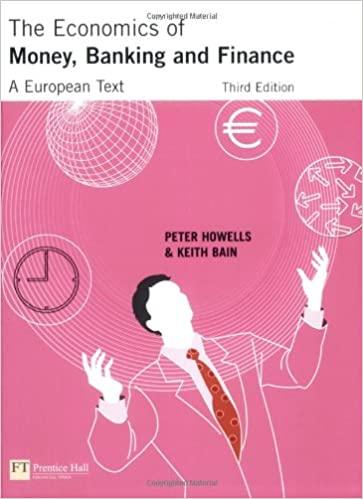Stock X has a 10.0% expected return, a beta coefficient of 0.9, and a 40% standard deviation of expected returns. Stock Y has a 12.5% expected return, a beta coefficient of 1.2, and a 20.0% standard deviation. The risk-free rate is 6%, and the market risk premium is 5%. The data has been collected in the Microsoft Excel Online fille below. Open the spreadsheet and perform the required analysis to answer the questions below. X THHH Open spreadsheet a. Calculate each stock's coefficient of variation. Round your answers to two decimal places. Do not round intermediate calculations. CVX - CV - b. Which stock is riskier for a diversified investor? 1. For diversified investors the relevant risk is measured by beta. Therefore, the stock with the lower beta is more risky. Stock X has the lower beta so it is more risky than Stock Y. II. For diversified investors the relevant risk is measured by standard deviation of expected returns. Therefore, the stock with the lower standard deviation of expected returns is more risky, Stock Y has the lower standard deviation so it is more risky than Stock X III. For diversified investors the relevant risk is measured by beta. Therefore, the stock with the higher beta is less risky. Stock Y has the higher beta so it is less risky than Stock X IV. For diversified investors the relevant risk is measured by beta. Therefore, the stock with the higher beta is more risky. Stock Y IV. For diversified investors the relevant risk is measured by beta. Therefore, the stock with the higher beta is more risky. Stock Y has the higher beta so it is more risky than Stock X. V. For diversified investors the relevant risk is measured by standard deviation of expected returns. Therefore, the stock with the higher standard deviation of expected returns is more risky. Stock X has the higher standard deviation so it is more risky than Stock Y. C. Calculate each stock's required rate of return. Round your answers to two decimal places. % % d. On the basis of the two stocks' expected and required returns, which stock would be more attractive to a diversified investor? e. Calculate the required return of a portfolio that has $8,500 invested in Stock X and $7,000 invested in stock Y. Do not round intermediate calculations. Round your answer to two decimal places. % f. If the market risk premium increased to 6%, which of the two stocks would have the larger increase in its required return? Excel t ID Home Insert Formulas Data Review View Help Tell me what you wan X cut [G Copy Arial 10 A A == 2 Wrap Text Paste BI U Dab Format Painter . Merge & Cente Clipboard Font Alignment B D A Evaluating risk and retum Expected return of Stock X Beta coefficient of Stock X Standard deviation of Stock X retums 10.00% 0.90 40.00% Expected return of Stock Y Beta coefficient of Stock Y Standard deviation of Stock Y retums 12.50% 1.20 20.00% Risk-free rate (TRF) Market risk premium (RPM) 6.00% 5.00% 3 $8,500.00 $7,000.00 U Formulas #N/A #N/A #N/A + Dollars of Stock X in portfolio 5 Dollars of Stock Y in portfolio Coefficient of Variation for Stock X 3 Coefficient of Variation for Stock Y 9 0 Riskier stock to a diviersified investor 1 2 Required return for Stock X -3 Required return for Stock Y 25 Stock more attractive to a diversified investor 26 Required return of portfolio containing 27 Stocks X and Y in amounts above 28 29 New market risk premium #N/A #N/A 24 #N/A #N/A 6.00% With new market risk premium, stock with larger 30 increase in required return 31 #N/A









